« November 2008 | HOME PAGE | January 2009 »
December 17, 2008
More LIFE
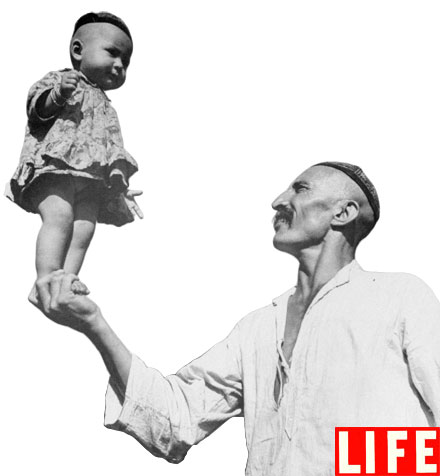
posted December 17, 2008 at 07:34 PM unofficial Xinjiang time | Comments (25)
December 12, 2008
Luvchina's One-Man Nationalist Fatwa
Somebody really, really cares about me! And he's been nice enough to write a rambling, semi-psychotic diatribe all about me. Think I'm joking?
Well, he cares thiiiiiiiis much:
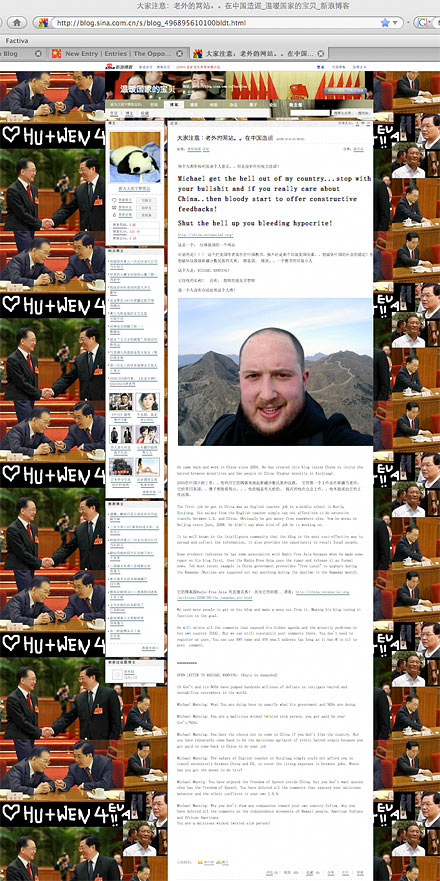
I'll let you check out the post for yourselves. Needless to say it's not a development I can really welcome... but I suppose it's a badge of honor, of sorts.
I've almost certainly dealt with this person before as a commenter. He's likely a Chinese person living in the United States. The dork uses various names on this site, including "tctdh", "sogdia", and "oldwiseman". His blog on sina.com mostly focuses on pictures of his sister (a flight attendant on Air New Zealand) with Chinese celebrities, rants against France, and... a vaguely homoerotic display of Hu Jintao and Wen Jiabao photos. Hundreds of them.
Really, you should check it out, if only to peer into the mind of a Chinese ultra-nationalist for just a moment. (And yes, that background in the screen grab above is for real.)
Oh yeah... vote for me in the 2008 China Blog Awards! Just click here, and then click the "+" symbol. Do it everyday.
posted December 12, 2008 at 04:16 PM unofficial Xinjiang time | Comments (75)
December 10, 2008
Pakistan Nukes China. Et la France?
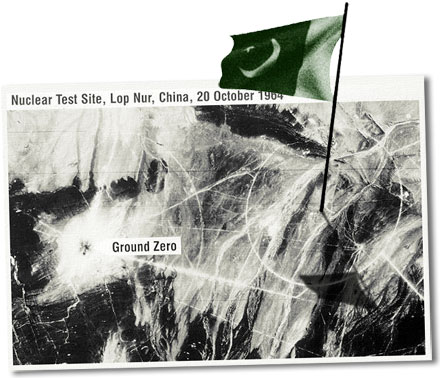
A stumper for your next quiz night: Name all of the countries that have exploded atomic weapons in Xinjiang.
The answer: China and... Pakistan?
Crazy stuff in today's New York Times nuclear book review smorgasbord. The book in question is "The Nuclear Express: A Political History of the Bomb and Its Proliferation" due out in January.
The authors drop more than one bombshell recovered from the dustbin of atomic history:
Secret cooperation extended to the secluded sites where nations tested their handiwork in thundering blasts. The book says, for instance, that China opened its sprawling desert test site to Pakistan, letting its client test a first bomb there on May 26, 1990.
That alone rewrites atomic history. It casts new light on the reign of Benazir Bhutto as prime minister of Pakistan and helps explain how the country was able to respond so quickly in May 1998 when India conducted five nuclear tests.
“It took only two weeks and three days for the Pakistanis to field and fire a nuclear device of their own,” the book notes.
In another disclosure, the book says China “secretly extended the hospitality of the Lop Nur nuclear test site to the French.”
France!? Say it ain't so, Xiaoping. Well, it couldn't be any worse than this:
The book, in a main disclosure, discusses how China in 1982 made a policy decision to flood the developing world with atomic know-how. Its identified clients include Algeria, Pakistan and North Korea.
Alarmingly, the authors say one of China’s bombs was created as an “export design” that nearly “anybody could build.” The blueprint for the simple plan has traveled from Pakistan to Libya and, the authors say, Iran.
But why would China do something so stupid? Well, old habits are hard to kick. Nikita Khrushchev said in his memoirs that Mao's attitude towards the nuclear holocaust of World War III was, "Hey, even if China loses 300 million people we'll still have plenty left over."
Why did Beijing spread its atomic knowledge so freely? The authors speculate that it either wanted to strengthen the enemies of China’s enemies (for instance, Pakistan as a counterweight to India) or, more chillingly, to encourage nuclear wars or terror in foreign lands from which Beijing would emerge as the “last man standing.”
Sounds like the kind of plan that will definitely work out in the long run.
posted December 10, 2008 at 12:26 AM unofficial Xinjiang time | Comments (33)
December 05, 2008
Al-Qaeda in China
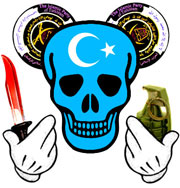 The Jamestown Foundation has added a new chapter in its never-ending quest to figure out anything solid on organized Uyghur terrorism:
The Jamestown Foundation has added a new chapter in its never-ending quest to figure out anything solid on organized Uyghur terrorism:
On November 16, a self-proclaimed al-Qaeda spokesman named Muhammad Uighuri claimed that Osama bin Laden has appointed a leader for a previously unknown organization called al-Qaeda in China. Uighuri said the new leader of al-Qaeda for China in general and for Xinjiang province in particular was a Chinese citizen named Abdul Haq Turkistani (Tabnak News Agency, November 16). Despite unsubstantiated claims by China’s security services and Foreign Ministry, there is little proof that al-Qaeda has ever engaged in active operations within China.
The last sentence being the most important, of course.
Between China and al-Qaeda's penchants for both opaqueness and obfuscation, it's fairly safe to say that nobody anywhere knows anything for sure when it comes to ETIM, TIP, etc. (The New Dominion has also been down this path before.)
The structure of TIP and the low profile of its new leader, Abdul Haq Turkistani, coupled with doubts about the identification of ETIM with the TIP have made it difficult to understand the real affiliation of this new group with al-Qaeda....
Given the questionable record of prior claims that the mainly Sufi Muslim Uyghur separatists have aligned themselves with the Salafist al-Qaeda organization, the legitimacy of the present announcement remains uncertain. The actual existence of TIP cannot yet be verified and it is important to note that the name Abdul al-Haq Turkistani did not appear on a list of major Uyghur “terrorists” released in October by China’s Ministry of Public Security (Xinhua, October 21).
In other words, nobody knows jack. (h/t China Notebook)
••••
Also, I've been meaning to tell you to take a look at Xinjiang: Far West China, a blog being run out of Karamay in northern Xinjiang. It has a sort of "Xinjiang for the casual reader" feel that will appeal to those of you looking to get a grasp on my favorite autonomous region. The site brings the number of Xinjiang blogs worth reading up to three!
••••
It's easy. Click the plus sign here to vote for me in the 2008 CHINA BLOG AWARDS.
posted December 05, 2008 at 08:04 AM unofficial Xinjiang time | Comments (60)
December 04, 2008
LIFE with Sheng Shicai
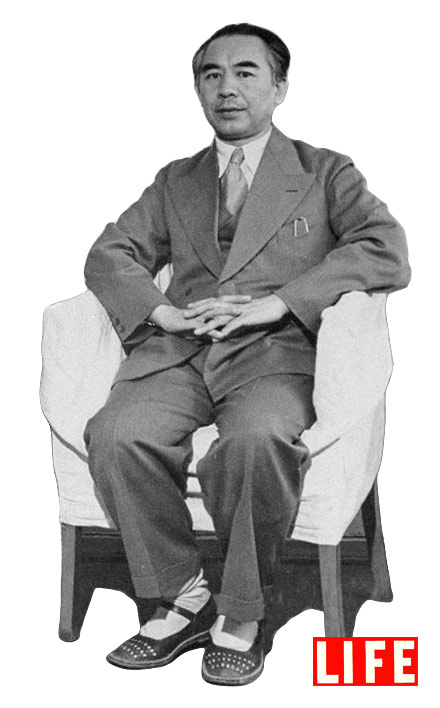
One of the great things about the LIFE photo archive on Google is that it's now possible to pair-up old TIME Magazine articles with their long-lost photos. It takes a bit of detective work, but you can dig up a lot of images that illuminate the plain text in TIME.com's archives.
Take the story of old Sheng Shicai 盛世才 (pictured above), Xinjiang's warlord governor from 1933 to 1944. Some of you may remember him for chasing the Pickle King of Islamistan back to Britain ten years earlier. Others may remember him as Stalin's hand pick for Communist Party membership... who then flipped to the Kuomintang in 1942 and executed Chairman Mao's little brother. (Check out some of his regime's currency from 1941.)
TIME'S Chungking correspondent, Theodore White, and LIFE Photographer William Vandivert (later a founder of Magnum) caught up with Sheng during the brief period between his betrayal of the Communists in '42... and his appointment as the Nationalist's Minister of Agriculture & Forestry in 1944 (and subsequent flight to Taiwan in 1949).
What you'll find if you click through below is perhaps the most awesome article ever written about Xinjiang, "Victory Without Arms: Report from Turkestan" published in TIME on October 25, 1943. I've added some formatting — which TIME.com inexplicably does not do — and more importantly added the pertinent photos from the LIFE archive.
Those of you who still need enticing to read the entire article should take a look at this prescient quote:
To yet another problem the world will be highly sensitive: the Chinese treatment of the minority Moslem race, alien in language, religion and culture. Are the Turks, who form 60% of the population, to be steamrollered into the Chinese pattern or inundated and absorbed by tidal waves of Chinese immigration? Or will China try to preserve the minority languages, schools and courts and let the natives participate in their own Government ? Upon her record in Turkestan, China's claim for trusteeship for other retarded racial groups in Asia may stand or fall.
Was that written in 1943? I think I read the same thing the other day in the New York Times. C'mon, click through...
Note: place your mouse over the photos to read captions.
VICTORY WITHOUT ARMS
REPORT FROM TURKESTAN
Monday, Oct. 25, 1943
TIME Magazine

On "the roof of Asia," where the empires of Russia and Britain touch the borders of China, lie the wastes of Turkestan—also called, in its Chinese area, by the Chinese name of Sinkiang. It is a land of great deserts, oases, of some 4,000,000 Moslems and Chinese; a nomads' land of some 12,000,000 sheep, 2,000,000 horses, 50,000 camels; a land whose exact area is unknown (estimates: 400,000 to 700,000 sq. mi.). Into this vast area, no foreign journalist had been allowed to go for many years. Out of it had come only rumor and secondhand report.
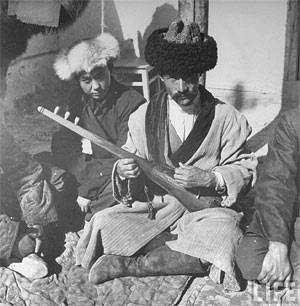 Last week the only authoritative, firsthand report on Chinese Turkestan reached the U.S. That report came from TIME'S Chungking correspondent, Theodore White, who with LIFE Photographer William Vandivert has just completed a two-month tour of the hitherto forbidden area. Correspondent White brought back fresh and important news:
Last week the only authoritative, firsthand report on Chinese Turkestan reached the U.S. That report came from TIME'S Chungking correspondent, Theodore White, who with LIFE Photographer William Vandivert has just completed a two-month tour of the hitherto forbidden area. Correspondent White brought back fresh and important news:
Russia has withdrawn from the heartland of Central Asia. Over all Chinese Turkestan the Government of nationalist China has reassumed full authority. Its alomans blazon with fresh white paint as far as the high Pamirs and dark-eyed dancers of the oases tread out, to the measured beat of tambourines, new dances dedicated to "final victory."
This is big news. From Sinkiang had come rumors of Red Army garrisons, secret torture chambers, murder, violence and the silent operation of agents of contending empires. Now there was peace on the inner frontiers of Asia. That peace had been achieved by a diplomatic feat as great as any in Chinese history, as significant as the abolition of extraterritoriality by the U.S. and Britain. It meant the practical recognition by the U.S.S.R. of China's status as a sovereign equal.
The Days of Ma. The story behind this news was twelve years old, a suppressed fragment of modern history. The story began in the early '30s when years of misrule under a senile, corrupt bureaucracy brought the ancient tension between the Chinese ruling minority and the Moslem Turko peasantry to the breaking point. From Kansu, the terminal province of the Great Wall, ferocious Tungan cavalrymen entered Sinkiang in 1931 under the leadership of a 26-year-old horseman—Ma Chung-ying. To his banners rallied Turko peasants and Tungan (Chinese Moslem) rebels. Burning, looting, raping, they all but annihilated the Chinese population in the south mountains.
Japan, gorged with Manchurian spoils but hungry for more, reputedly supplied advisers to Ma Chung-ying. Britain, whose Indian empire verged on the area of revolt, watched with interest. Within the Great Wall, Chiang Kai-shek was simultaneously fighting a half-dozen civil wars, trying to bring his bleeding country into readiness for war with Japan. He had no strength to spare for Turkestan.
More interested than any other power was the Soviet Union. "We do not mind," said a Soviet diplomat to a Chinese diplomat a decade ago, "if you Chinese develop Turkestan. But if you permit Turkestan to become a second Manchuria, we must act to protect ourselves." The Soviet Union suspected Japanese designs on Soviet Central Asia itself. Also, in Russia's mind there lingered the ancient Czarist fear of British influence working out from India. To the Russians, it seemed that the British Consulate at Kashgar might be almost as dangerous as the reported Japanese advisers of Ma Chung-ying. There were other reasons for the Soviet fear. White Russian troops, remnants of the legions of Annekov Dutov, still operated in Sinkiang. The general unrest on the Chinese side of the border might be swiftly communicated to the unstable Moslem millions in Soviet Uzbekistan, Kazakstan and Turkmenistan. These were unspoken Russian calculations.
In the winter of 1934 Sheng Shih-tsai, a Manchurian-born Chinese officer who had assumed dictatorship of the province, was beleaguered in the provincial capital at Urumchi. Outside the city's walls, in the bitter cold, young Ma Chung-ying's troops were slaughtering and torturing Chinese refugees. Cut off, separated from the Central Government by over 1,500 miles of desert and mountains, Sheng had two choices: to surrender himself and his troops to certain butchery; or to accept aid where he could find it.
The Days of the Hammer. Heaven was high, says the Chinese proverb, and the throne was far away. In the spring of 1934, Russian planes swooped down on the besiegers. Provincial soldiery suddenly swelled with reinforcements. Ma Chung-ying himself was soon in flight.
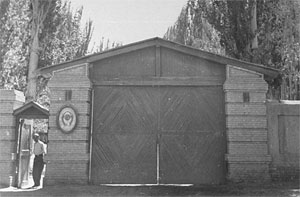 For the Soviet Union this event began a phase of foreign policy that continues to this day: protection of Soviet frontiers by the penetration and occupation of border areas. That Russia was able to penetrate and later develop her interest in a region so important, so vast, with so little knowledge of the move reaching the outside world, seems unbelievable in the 20th Century. But it happened.
For the Soviet Union this event began a phase of foreign policy that continues to this day: protection of Soviet frontiers by the penetration and occupation of border areas. That Russia was able to penetrate and later develop her interest in a region so important, so vast, with so little knowledge of the move reaching the outside world, seems unbelievable in the 20th Century. But it happened.
The Moslem revolt was not thoroughly quelled until the fall of 1937. By that time Generalissimo Chiang Kai-shek's far distant Central Government was at war with Japan and all its energy was absorbed. For Sheng Shih-tsai, the problem was simple. He represented the minority race in a vast region surcharged with racial and religious tension; his immense fear of Japanese imperialism grew as Japan drove farther and farther into the heart of Asia. Without help, he could not maintain himself. Thus, from 1934 to 1942. he leaned ever more heavily on the U.S.S.R.
To protect himself from another Moslem attack from Kansu, Sheng Shih-tsai invited the Russians to set up a Red Army garrison at Kami. A full regiment of Russian troops was stationed there—dressed not in Soviet uniform, but in the Chinese uniform. Russia was permitted to establish a trade agency called Sovintorg which monopolized all Sinkiang export trade. The newly built Turksib Railway exercised enormous economic force. Russians helped to lay out roads, planned irrigation projects, trained a provincial army, staffed provincial hospitals.
A stern and efficient internal police force was modeled on Russian lines. The U.S.S.R. loaned five million gold rubles to the Sinkiang Government. Even traffic shifted from the left side of the road, as in China, to the right side, as in Russia. Russian influence was vast and powerful. Yet never was it so great as the outside world believed. Always, Sheng kept sovereignty; never did he wholly relinquish the internal administration.
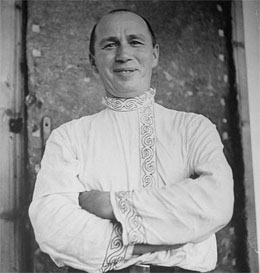 Sheng's provincial Government made every effort to facilitate the flow of Russian aid over the highway system to Chiang Kai-shek's Central Government, establishing hostelries all the way for Russian drivers. An assembly plant was erected at Urumchi, where Russian equipment was put together for transfer to China. Provincial fields were steppingstones for Russian planes and personnel en route to participate in Central China battles in 1938. In 1939, perhaps the high point of Soviet-Sinkiang cooperation, an oil refinery was built and oil wells were drilled.
Sheng's provincial Government made every effort to facilitate the flow of Russian aid over the highway system to Chiang Kai-shek's Central Government, establishing hostelries all the way for Russian drivers. An assembly plant was erected at Urumchi, where Russian equipment was put together for transfer to China. Provincial fields were steppingstones for Russian planes and personnel en route to participate in Central China battles in 1938. In 1939, perhaps the high point of Soviet-Sinkiang cooperation, an oil refinery was built and oil wells were drilled.
The Days of Chiang. By the spring of 1942, things had changed. China's fighting front had stabilized. China's economy was struggling for life within the Jap blockade. Much of China's salvaged industrial equipment lay idle for lack of raw material, and her interest in the resources of the Inner Asia borderlands was higher than ever. At the same time, the Russo-German war had interrupted Soviet-Sinkiang trade. The Soviet Union had little or no heavy equipment to barter. It was time for Sheng and the U.S.S.R. to review the grounds for future cooperation.
For the Russians, the old anxiety about Central Asia presumably was gone. Britain was now a trusted ally. Russia was more ready to accept at full value British protestations that the imperial interest lay in the maintenance of Chinese sovereignty in Sinkiang as a buffer between India and Siberia. Japan, thoroughly engaged in external war, presented no momentous threat. Above all else, China had legal title to Sinkiang—the sovereignty which Moscow always recognized—and as one of the United Nations was bound as an ally to the Soviet Union.
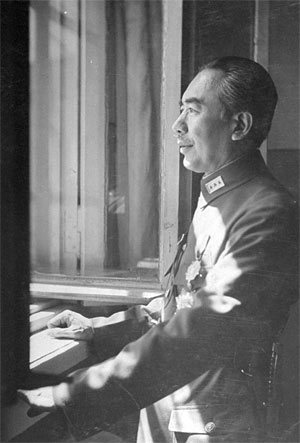 General Sheng was probably also recasting accounts. Now the Central Government was willing to send him idle machinery, exploit his resources, take him back into the Kuomintang fold. Communications with Chungking were slow but clear. Gone was the isolation which originally made him turn to Russia.
General Sheng was probably also recasting accounts. Now the Central Government was willing to send him idle machinery, exploit his resources, take him back into the Kuomintang fold. Communications with Chungking were slow but clear. Gone was the isolation which originally made him turn to Russia.
Negotiations began with the utmost delicacy. General Chu Shao-liang flew to Urumchi for the first exploratory talks in March 1942. The talks progressed firmly and rapidly. In August 1942, they were climaxed by the secret, dramatic flight of Madame Chiang Kai-shek herself to Sinkiang.*
Moving with a rare rapidity, the Central Government meshed gears with the provincial Government. Old slogans and banners came down—up went the slogans of the Kuomintang and China. In all the desert oases along the immemorial trade routes, the widespread pictures of General Sheng were matched with equally resplendent monochromes of Chiang Kaishek. The provincial "Anti-imperialism Society" was disbanded; a branch of the Kuomintang was set up.
The Days of Hope. The two TIME & LIFE men arrived at the height of the change. Outgoing roads were dotted with cars hauling out Russian equipment from dismantled plants. The Russians were withdrawing their drilling and refining equipment from the Sinkiang oilfields. The Russian garrison at Hami was departing by truck, in small units. The Russians were removing their autos, spare tires, generators, household goods and furniture. Their Sovintorg had closed all its minor agencies and turned the buildings over to the Chinese Government.
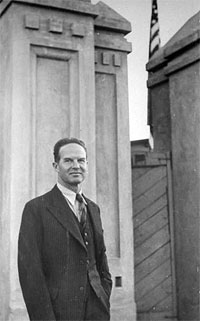 A U.S. consulate had been established at Urumchi in March; in September a British consul arrived. Traffic in Urumchi this fall was back again on the left side of the road, as in Central China. Thus peacefully, with the minimum possible friction, China once again moved up to the great frontiers of her past history.
A U.S. consulate had been established at Urumchi in March; in September a British consul arrived. Traffic in Urumchi this fall was back again on the left side of the road, as in Central China. Thus peacefully, with the minimum possible friction, China once again moved up to the great frontiers of her past history.
Probably no similar stretch of land in all the world is so crowded with historic ruins, sterile and clean beneath the desert dust. Through oases in Turkestan, over one of the master roads of history, wound caravans and pack trains that linked the West and East. To Europe went silks from the Orient; to China came furs, jade and treasured goods from lands beyond the Wall. From these lands burst out great nomad hordes (Huns, Mongols, Turks) that time & again had devastated both civilized Europe and the capitals of China.
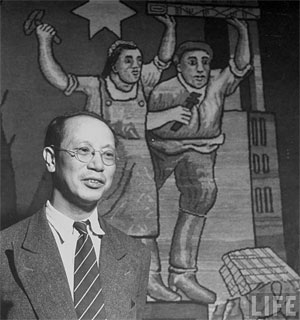 In this land of great ghosts, the Chinese Government today looks for more than antiquities. The fact of reintegration means much to Chinese pride, calling to mind the greatest days of China's history. It gives China what China's greatest statesmen have always sought—a vast natural buffer zone between her own centers of population and the vigorous pressure of the outland. Beneath Sinkiang's sands and mountains lie raw mineral resources which may match even Chinese optimism. The Russians have plotted a chain of oil deposits stretching almost a thousand miles, from the Pamirs to north of the Tien Shan (mountains).
In this land of great ghosts, the Chinese Government today looks for more than antiquities. The fact of reintegration means much to Chinese pride, calling to mind the greatest days of China's history. It gives China what China's greatest statesmen have always sought—a vast natural buffer zone between her own centers of population and the vigorous pressure of the outland. Beneath Sinkiang's sands and mountains lie raw mineral resources which may match even Chinese optimism. The Russians have plotted a chain of oil deposits stretching almost a thousand miles, from the Pamirs to north of the Tien Shan (mountains).
The Chinese also look for great coal resources. Copper, critically deficient in the interior, is in Sinkiang; so are iron, molybdenum and other ores. Sinkiang's succulent fruits and melons are a byword in Asia. Its superb cotton, its magnificent horses are all of matchless quality. But peasant immigration must be limited to water resources—three or four millions is probably the maximum total of agricultural pioneers.
The Days of Trial. Sinkiang presents China with a sheaf of problems, whose solutions all the world will keenly watch. The very riches pose the first problem: for developing resources and plotting communications, have the Chinese got the necessary technical skill? Have they got adequate administrative personnel? Will they retard development of Sinkiang until industrial China is equal to the task, or call in foreign capital now?
 To yet another problem the world will be highly sensitive: the Chinese treatment of the minority Moslem race, alien in language, religion and culture. Are the Turks, who form 60% of the population, to be steamrollered into the Chinese pattern or inundated and absorbed by tidal waves of Chinese immigration? Or will China try to preserve the minority languages, schools and courts and let the natives participate in their own Government ? Upon her record in Turkestan, China's claim for trusteeship for other retarded racial groups in Asia may stand or fall.
To yet another problem the world will be highly sensitive: the Chinese treatment of the minority Moslem race, alien in language, religion and culture. Are the Turks, who form 60% of the population, to be steamrollered into the Chinese pattern or inundated and absorbed by tidal waves of Chinese immigration? Or will China try to preserve the minority languages, schools and courts and let the natives participate in their own Government ? Upon her record in Turkestan, China's claim for trusteeship for other retarded racial groups in Asia may stand or fall.
Most important of all, Sinkiang presents new statesmen in China with the problem their predecessors faced with signal lack of success for 150 years—the problem of land frontiers. China's eastern and southern frontiers are sea and mountain; but in the north and west China shares the longest land frontier in the world with Russia. Corrupt and ignorant statesmen of the Manchu dynasty, brutal provincial war lords understood nothing of the art of world politics; Russo-Chinese relations were traditionally bad.
But dynamic, nationalist China and powerful, victorious Russia are different quantities. In the heart of Asia these two powers must live side-by-side, sharing the rich resources, promoting a common trade, developing common irrigation, and controlling undisciplined nomadic tribes. Only mature and wise statesmen can solve such problems.
Perhaps the greatest significance of the past 18 months in Central Asia's history was the transfer of power in quiet peace, with differences settled at the table and not in the field. In this sense, Sinkiang was a victory for the principles of the United Nations, as great as any achieved by the force of arms.
* A story which still cannot be told in full. —Ed.
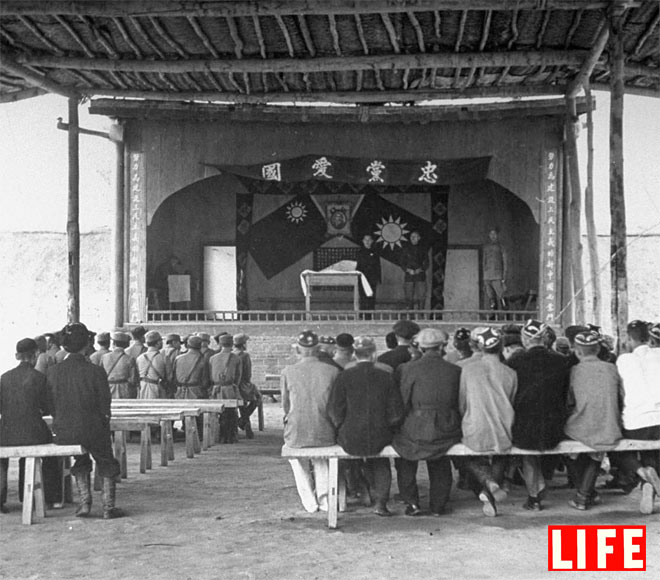
P.S. Had anyone ever heard of Madame Chiang Kaishek's journey to Urumqi to win over Sheng Shicai before? I haven't been able to find much about it online.
P.P.S. Some of you may be interested to read more about then-US Consul Edmund Clubb, who briefly represented the U.S. in Urumqi. He later became the last U.S. diplomat in Beijing after the Communist victory, taking the flag home with him in April 1950. After that, Senator Joseph R. McCarthy basically destroyed his life. Read his fascinating obituary here.
P.P.P.S Vote for me to retain my title in the 2008 China Blog Awards! All you have to do is visit this site's profile on Chinalyst as frequently as possible and click the plus sign. Thanks!
posted December 04, 2008 at 12:28 AM unofficial Xinjiang time | Comments (150)
December 02, 2008
Beijing Muppets
You know you read too many Beijing blogs when...

... you see a photo of muppets in the New York Times and notice a striking resemblance to a number of prominent bloggers.
From left to right, starting on top, I see:
Nels Frye of Stylites; Jonathan Ansfield of Newsweek/Stone Boat; Jeremiah Jenne of the Granite Studio; and, Anna Sophie Loewenberg of Sexy Beijing.
I'm sure Jim Boyce must be in there, too, but I can't pick out which muppet he is. Any other suggestions?
posted December 02, 2008 at 06:14 AM unofficial Xinjiang time | Comments (58)
